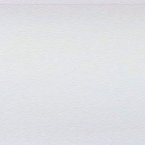Slings are baby carriers designed to help you carry your baby while relieving pressure on your arms and back. A newborn baby sling is an ancient method of carrying a baby and has been practiced for centuries all over the world.
Baby carriers have been around for thousands of years. Until the early 1900s, parents around the world used a variety of long fabrics, shawls, scarves, and even sheets to snuggle up to their children and do household chores. Carrying a child was not something "special" or different, as it is perceived today in the Western world; it was a necessity. Mom had to work incredibly hard, and she did not have time to stop and entertain the child, so the baby was carried everywhere with her.
Even today, many traditional types of slings are still used in developing countries, although this is usually limited to indigenous communities where carrying children is a completely normal, necessary and lifestyle experience😉.
In industrialized countries, baby slings have gained popularity in recent decades, thanks to supporters of the continuous connection between mother and child😍.
When using a sling, there is no need to use the elevator and ramp. And hiking trails, crowded shops, and public transport will become more accessible👍.
Strollers take up a lot of space in the back of the car. Sling - fits in a small bag and can be easily carried until you need it.
For the birth of a baby, parents are diligently preparing, buying various trifles: diapers, sliders, hats and socks. We recommend that you add a sling to this list🙏.
Here are the top medical benefits of a sling:
1) Babies feel safe and cry less. In 1986, a team of pediatric health professionals in Canada conducted a study published in the medical journal Pediatrics that specifically looked at how much less babies cry when in a sling. Hunziker and Garr are researchers who found that a baby sling for three hours a day reduced a baby's total crying by 43 percent overall and by 54 percent in the evening hours. Baby crying triggers the release of stress hormones in both children and adults. Thus, less crying means less stress and anxiety for the baby and parents.
2) Carrying promotes the physical development of the child. The upright position of the carried child helps to strengthen the neck and control the head. If the infant's arms are pressed against the parent's chest, the infant is pressed against the breast and strengthens his or her arms. The flat arrangement of child seats and cribs is not conducive to such physical development. The constant movement of the child not only soothes the child, but also promotes his balance and the development of the inner ear.
3) The production of breast milk improves. Physical contact with the baby promotes the release of the hormone oxytocin. Oxytocin affects the production of mother's milk. Many women are also able to breastfeed their baby using a sling, making it easy to breastfeed even in public places.
4) Baby sling promotes neurobehavioral and speech development. Newborn babies have a constantly changing view of the world, as opposed to looking at one mobile phone hung on the crib. They are exposed to different voices, emotions, and facial expressions, all of which are critical to neurobehavioral development. Carried babies tend to hear more of mom's conversations with other people. The more words a child hears, the faster he learns to speak them. Children remember everything very well from birth.
5) Baby sling improves the bond between mother and baby. Oxytocin also stimulates the bond between mother and child - the feeling of love for your child. Strong bonds between mother and child contribute to better child care and reduce the incidence of postpartum depression and psychosomatic illness in the mother. Dress your child in a comfortable bodysuit, jumpsuit or vest. Keep in mind that the sling acts like an extra layer of clothing plus heat from the body of the uterus. It is important that the child is not hot.
6) The sling helps the mother to keep herself in great shape. Carrying an extra few pounds all day is a great workout for parents and a great way to get in shape after pregnancy. When a child is attached to you, every step you take around the house helps you strengthen your leg, back and stomach. As the child slowly gains weight, the intensity of your workout gradually increases.
7) No more flat baby heads. Plagiocephaly is the medical term for the flattening of the back of a child's head that results from spending many hours a day sitting in a booster seat or lying in a stroller. If babies spend all night on their back and all day in a child seat, the constant pressure on the back of the skull can lead to a flattening of the back of the skull, which many people find unattractive. Plagiocephaly can be prevented by keeping the baby in a carrier or sling instead of a child seat or crib. Take care of a natural hat, a cap for the child's head.
Are there any risks?
The main risks of using a sling are falls and difficulty breathing due to the baby's face being too close to the parent's chest. Fortunately, both risks have been studied by pediatricians and baby slings are safe provided the slings are used properly and are in good condition.
Quick Search

Prices & Services
Letters from 2$
Fast Gift Delivery
2-way Video Chat
5 Membership Levels
View all rates
